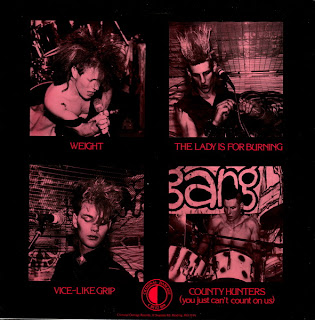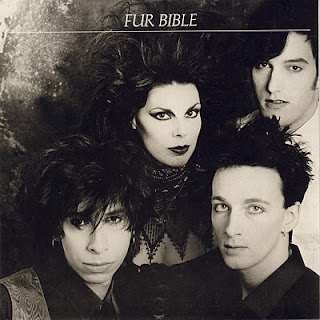The year is 1980 and guitarist Bryan Gregory has abruptly left The Cramps, reportedly absconding with not only his girlfriend Andrella but also with most of The Cramps’ stage equipment. It seems a strange move, as journo James Marshall would observe at the time;
“It’s hard to imagine The Cramps without Bryan , but it’s harder to imagine Bryan
In retrospect, one may be forgiven for wishing that perhaps the mind could have boggled a little harder because the answer to this imponderable riddle would turn out to be the dire entity known as Beast. Author Ian Johnston in his above mentioned biography would describe Beast as “a universally reviled rock band” and Mick Mercer was similarly scathing with “Some dodgy old American band who liked to look swish…the live experience dulled all present.” (Gothic Rock, Pegasus Publishing, 1991).
But never fear! Being the brave and intrepid musical explorers that we are, far be it from us to be deterred by the errant mumblings of those who have gone before! Not when we can experience the true wonder and delight of Beast for ourselves! Onward!
Love in a Dying World was Beast’s second single following the Possessed 7” (Amdusias, 1982). Straight away, the astute observer is immediately struck by the band’s classily subtle logo apparently composed from two parts willies and one part dookie. Clearly, we are in for quite a treat here, and the single does not disappoint so long as one was not anticipating that anything good could possibly emerge from this.
Musically speaking, the Love in a Dying World single is very much a case of Goth-By-Numbers. Goth as a genre of course is no stranger to clones, but it is rare that it has been done before with so little of interest to recommend it. I suppose one could always argue that the inclusion of a saxophone does add something unusual, so it’s simply too bad that I don’t happen to like saxophone. Nevertheless, the single does manage to distinguish itself in spectacular fashion in letting Andrella’s vocals shine out in their astonishingly stellar level of mediocrity.
But you don’t need to believe me and indeed, why should I have to suffer alone? It would be quite simply inexcusable of me to deprive you gentle reader, of experiencing the full horror for yourself:
On the whole, it’s probably better to consider Beast as something for the die-hard Cramps collectors, while the rest of us concede that Beast were, shall one politely say, more than a little pedestrian. They went on to record New Moone both as a 12" and a 7” on I.D. Records in 1983. I’ll leave it up to you to decide if this was in fact any kind of improvement:
The band, sans Gregory, would later relocate to
Track Listing:
- Love in a Dying World
- Floating / Dead
Line Up: Andrella Canne (vocals), Bryan Gregory (guitars), other members unknown, but to extrapolate from The Veil’s line up James Christ (bass) & Marcus De Mowbray (drums) would seem likely culprits.




























